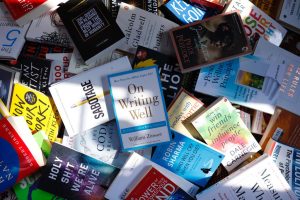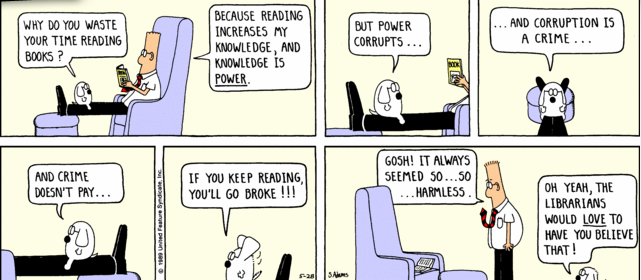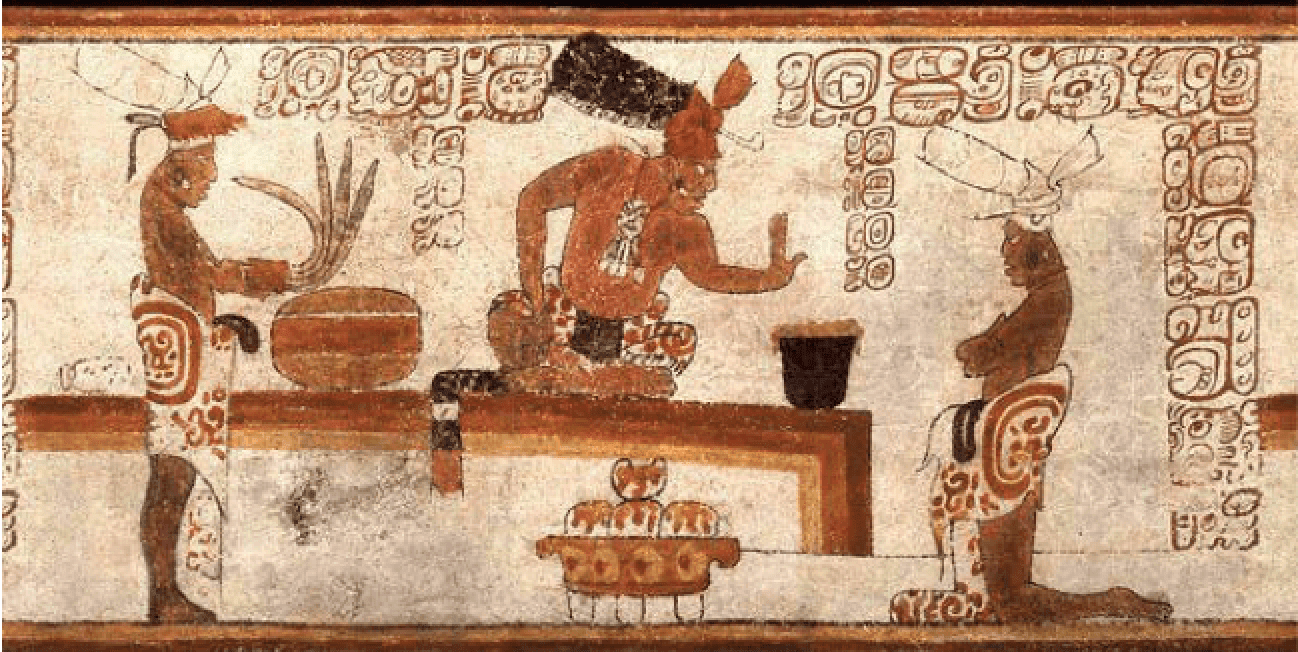Book literature
10 Books That Will Change Your Life

Introduction
Books have the power to change the way we see the worldand ourselves. A single story or idea can inspire personal growth, challenge our perspectives, and motivate us to take action. Whether you’re seeking guidance, motivation, or just a fresh outlook on life, the right book can be a powerful tool for transformation. In this article, we’ll explore 10 life-changing books that have inspired millions of readers worldwide. These books span genres, from self-help and memoirs to fiction and philosophy, but they all share one thing in common: the ability to make you think differently and live more intentionally. Ready to find your next transformative read? Let’s dive in.
The Rise of Life-Changing Books

Image by: Yandex.com
Life-changing books have become more popular over the years. More people are realizing how reading the right book can help them grow and change their lives. As people look for ways to improve themselves, these books have gained attention for their ability to inspire and motivate.
The Benefits of Life-Changing Books
Reading life-changing books can bring many benefits. They can help you understand yourself better, give you new ideas, and teach you how to handle challenges. These books offer simple advice that can make a big difference in how you live your life.
The Role of Life-Changing Books
Life-changing books play an important role in guiding people toward a better future. They provide valuable lessons on how to live a more fulfilling life. Whether you’re looking to grow personally or professionally, these books offer practical steps to make lasting changes.
Top 10 Books That Change Your Life

Image by: Yandex.com
1. The Power of Now by Eckhart Tolle
A modern spiritual classic, The Power of Now teaches the importance of living in the present moment and freeing yourself from negative thought patterns.
Takeaway: Focus on the present to reduce stress and find inner peace.
Quote: “Realize deeply that the present moment is all you ever have.”
2. Atomic Habits by James Clear
This bestselling book breaks down how small changes can lead to remarkable results. Clear offers practical strategies for building good habits and breaking bad ones.
Takeaway: Tiny, consistent actions can lead to significant personal growth.
Quote: “You do not rise to the level of your goals. You fall to the level of your systems.”
3. Man’s Search for Meaning by Viktor E. Frankl
A profound memoir by a Holocaust survivor and psychiatrist, this book explores how finding purpose can help us endure life’s greatest challenges.
Takeaway: Meaning can be found in even the darkest circumstances.
Quote: “When we are no longer able to change a situation, we are challenged to change ourselves.”
4. The Alchemist by Paulo Coelho
This beloved novel tells the story of Santiago, a shepherd on a journey to discover his personal legend. It’s a tale of dreams, destiny, and listening to your heart.
Takeaway: Trust in the journey and pursue your passions.
Quote: “When you want something, all the universe conspires in helping you to achieve it.”
5. The Four Agreements by Don Miguel Ruiz
A guide to personal freedom, this book presents four simple yet powerful agreements to live by, rooted in ancient Toltec wisdom.
Takeaway: Transform your life by changing the way you think and communicate.
Quote: “Be impeccable with your word. Don’t take anything personally. Don’t make assumptions. Always do your best.”
6. Daring Greatly by Brené Brown
Brené Brown explores the power of vulnerability and how embracing imperfection can lead to a more authentic and fulfilling life.
Takeaway: Vulnerability is not a weakness—it’s the key to connection and courage.
Quote: “Vulnerability is the birthplace of innovation, creativity, and change.”
7. Think and Grow Rich by Napoleon Hill
A timeless classic on personal success, Hill’s book outlines principles for achieving wealth and fulfillment through positive thinking and persistence.
Takeaway: Success starts with a clear vision and unwavering belief in yourself.
Quote: “Whatever the mind can conceive and believe, it can achieve.”
8. The Subtle Art of Not Giving a F*ck by Mark Manson
With humor and honesty, Manson challenges conventional self-help advice, encouraging readers to focus on what truly matters.
Takeaway: Prioritize what’s important and let go of the rest.
Quote: “You can’t be an important and life-changing presence for some people without also being a joke and an embarrassment to others.”
9. Meditations by Marcus Aurelius
A collection of personal writings by the Roman emperor, this book offers timeless wisdom on resilience, self-discipline, and leadership.
Takeaway: Practice stoicism to navigate life’s challenges with grace.
Quote: “You have power over your mind not outside events. Realize this, and you will find strength.”
10. The Gifts of Imperfection by Brené Brown
Another inspiring work by Brené Brown, this book encourages readers to embrace their flaws and live wholeheartedly.
Takeaway: Letting go of perfectionism leads to greater happiness and self-acceptance.
Quote: “Owning our story and loving ourselves through that process is the bravest thing that we’ll ever do.”
How Life-Changing Books Inspire Change

Image by: Yandex.com
Life-changing books inspire change by offering new ways to think and act. They help us see things from a different perspective, which can lead to positive changes in our attitudes and behaviors. When we read these books, we often feel motivated to make improvements in our personal lives, relationships, and careers.
How These Books Help You Grow
Many life-changing books focus on personal growth. They provide tips and strategies for becoming a better version of yourself. Whether it’s learning to manage stress, building self-confidence, or setting better goals, these books give you tools to improve yourself every day.
The Connection Between Books and Success
Life-changing books are often linked to success. By reading about successful people and learning from their experiences, we can apply similar strategies in our own lives. These books show us how small changes can lead to big achievements, whether it’s in our career, health, or happiness.
The Growing Popularity of Life-Changing Books

Image by: Yandex.com
More people are turning to life-changing books than ever before. As people look for ways to improve their lives, these books are becoming a go-to resource. The growing popularity shows that many people are searching for answers, and life-changing books are helping them find those answers.
The Challenges of Life-Changing Books
Despite their benefits, life-changing books can come with some challenges. It can be difficult to find the right book for your needs, or you might struggle to apply the advice given. Sometimes, it takes time to see the results from the lessons in these books, which can be discouraging for some readers.
The Future of Life-Changing Books

Image by: Yandex.com
In the future, life-changing books are likely to keep growing in popularity. As more people search for ways to improve their lives, these books will continue to inspire. New books will keep being written, offering fresh insights and ideas to help people live better and more meaningful lives.
Analysis Table of Life-Changing Books
| Book Title | Focus | Key Insights | Ideal For |
|---|---|---|---|
| The Power of Now | Mindfulness and Presence | Focus on living in the present | People seeking peace |
| Atomic Habits | Habit Formation | Small habits lead to big changes | People wanting self-improvement |
| Man’s Search for Meaning | Finding Purpose | Finding meaning in difficult situations | Those dealing with challenges |
| The 7 Habits of Highly Effective People | Success | Effective habits for success | People wanting to be more productive |
| Daring Greatly | Vulnerability | Embracing vulnerability for growth | People overcoming fear |
| The Alchemist | Dreams and Purpose | Following your dreams | People pursuing their passion |
| The Four Agreements | Personal Growth | Simple rules for a better life | Anyone seeking peace of mind |
| The Subtle Art of Not Giving a F*ck | Prioritization | Focus on what really matters | People who need mindset change |
| The Untethered Soul | Spiritual Growth | Letting go of mental attachments | Those seeking inner peace |
| You Are a Badass | Confidence and Empowerment | Believing in yourself | People needing self-confidence |
Comparative Table of Life-Changing Books
| Book Title | Depth of Insight | Practical Use | Best For |
|---|---|---|---|
| The Power of Now | Deep | High | People seeking calm |
| Atomic Habits | Moderate | High | People wanting new habits |
| Man’s Search for Meaning | Deep | Moderate | People looking for purpose |
| The 7 Habits of Highly Effective People | Moderate | Very High | Anyone seeking success |
| Daring Greatly | Deep | Moderate | People seeking courage |
| The Alchemist | Moderate | Moderate | Dreamers and explorers |
| The Four Agreements | Moderate | High | People seeking simplicity |
| The Subtle Art of Not Giving a F*ck | Low | High | People needing a mindset shift |
| The Untethered Soul | Deep | Moderate | Those seeking peace |
| You Are a Badass | Low | High | Anyone needing confidence |
Conclusion
Books have the incredible power to shift our perspectives, spark change, and inspire growth. The titles on this list have touched the lives of millions and continue to offer guidance, motivation, and wisdom. Whether you’re looking to build better habits, find your purpose, or embrace your true self, these books are a great place to start. Remember, personal growth is a journey—and the right book can be a powerful companion along the way. So, which book will you read first?
Call to Action
Which book has changed your life? Share your favorite transformative reads in the comments below, and subscribe for more inspiring book recommendations!
Book literature
6 Reasons To Keep Reading The Dilbert Comic Strip

Introduction
Since its debut in 1989, the Dilbert comic strip has held a special place in the hearts of office workers, managers, and anyone who has ever navigated the maze of corporate life. Created by Scott Adams, Dilbert captures the absurdities of cubicle culture—awkward meetings, meaningless jargon, and bosses who sometimes baffle more than they lead. Yet beyond the jokes about TPS reports and Pointy-Haired Bosses, Dilbert offers sharp observations, clever insights, and a welcome dose of laughter in an often stressful world. Here are six reasons to keep reading the Dilbert comic strip and why it remains as relevant today as when it first appeared in newspapers and online.
1. Razor-Sharp Office Satire
Dilbert excels at turning everyday work frustrations into laugh-out-loud moments. Whether it’s a manager who issues pointless memos or co-workers more interested in office politics than productivity, the strip holds up a mirror to corporate culture. Each three- or four-panel joke highlights behaviors and policies that many of us encounter: micromanagement, overbearing performance reviews, and technology that promises to make work simpler but delivers chaos instead. By poking fun at these situations, Dilbert helps readers feel less alone in their office woes and reminds us that sometimes the best response to absurdity is a good laugh.
2. Relatable Characters
One of Dilbert’s strengths is its cast of characters who embody familiar workplace archetypes. There’s Dilbert himself, the well-meaning engineer whose technical skills are matched only by his social awkwardness. His dog, Dogbert, offers cynical commentary and schemes for world domination. Alice brings fierce competence and unstoppable sarcasm, while Wally has mastered the art of doing as little work as possible. And then there’s the Pointy-Haired Boss, whose clueless leadership drives the plot of many strips. These characters reflect traits we’ve seen in ourselves or colleagues, making each comic hit close to home.
3. Timeless Themes and Lessons
Although Dilbert’s earliest strips focused on desktop computers and dot-com bubbles, the core themes remain relevant. The strip tackles universal issues such as poor communication, unbalanced work-life priorities, and the clash between innovation and bureaucracy. Scott Adams often weaves in deeper messages: the importance of clear goals, the risk of groupthink, and the power of individual initiative. By translating these lessons into humor, Dilbert encourages readers to think critically about their own workplaces and consider ways to improve processes and relationships.
4. A Healthy Dose of Stress Relief
Work stress can build up over time, leading to burnout and low morale. Reading a quick Dilbert strip during a break can offer a moment of comic relief and perspective. Laughter triggers the release of endorphins, natural mood elevators that reduce stress and promote a sense of well-being. By highlighting the silliness of certain office practices, Dilbert allows readers to step back and view their challenges with fresh eyes. Laughing at the Pointy-Haired Boss’s latest fiasco or Wally’s ingenious shortcuts helps defuse tension and makes the workday more bearable.
5. Sharpened Critical Thinking
Dilbert often includes industry jargon, management fads, and buzzwords—then shows their practical effects, usually disastrous. For example, strips about “synergy,” “reengineering,” or “agile transformation” reveal how these concepts can be twisted into meaningless corporate-speak. By watching these trends play out in exaggerated form, readers become more skeptical and discerning. They learn to ask: does this new process solve real problems, or is it just a catchy label? This critical lens can help employees and leaders avoid wasted time and resources on superficial initiatives.
6. Consistent Creativity and Innovation
After more than three decades, Dilbert remains fresh because Scott Adams continues to innovate. Beyond the daily strip, readers can enjoy book collections, calendar jokes, and themed series about topics like cybersecurity and remote work. During the pandemic, for instance, Dilbert tackled the challenges of working from home—office Zoom calls, the struggle to find quiet space, and the blending of personal and professional life. These timely takes show that the comic can adapt to new realities while preserving its core voice. Readers looking for both reliable humor and current commentary will find Dilbert evolving alongside their own careers.
Tips for Getting the Most Out of Dilbert
To fully appreciate the humor and insights in Dilbert, try these ideas:
- Follow Daily Strips Online: Bookmark the official Dilbert website or subscribe to email newsletters that deliver each strip to your inbox.
- Share with Colleagues: Posting a favorite strip in a shared workspace or messaging group can spark laughter and bonding among team members.
- Discuss Themes: After reading a joke, talk with coworkers about similar experiences at your own office—then brainstorm realistic ways to improve.
- Collect Favorites: Save or print strips that resonate most with you. Compiling a personal Dilbert scrapbook can be a fun morale booster.
- Explore the Books: Scott Adams has published several collections that group strips by theme, making it easy to dive deeper into topics like management or technology.
How Dilbert Inspires Positive Change
While Dilbert thrives on satire, it also inspires readers to make positive changes. Seeing leadership failures lampooned can motivate managers to communicate more clearly and lead with empathy. Engineers frustrated by endless meetings may push for streamlined schedules. Tech teams might reconsider adopting a new tool only if it solves real pain points. In this way, Dilbert functions as both comedic relief and a gentle nudge toward better workplace practices. By highlighting what doesn’t work, the strip encourages readers to imagine and implement what does.
Conclusion
For over thirty years, Dilbert has offered a hilarious, bite‑sized escape from the daily grind while delivering keen insights into corporate culture. Its satisfying blend of relatable characters, timeless themes, and sharp satire makes it worth reading every day. Whether you seek stress relief, improved critical thinking, or simply a good laugh, Dilbert delivers. As workplaces continue to evolve, Scott Adams adapts too, ensuring that each new strip remains fresh and relevant. Keep reading Dilbert to better understand the quirks of office life—and to enjoy a daily reminder that even the most absurd situations can inspire creativity and positive change.
Book literature
Apple Books on macOS Ventura: Guide to Books and Audiobooks

Introduction
Apple Books on macOS Ventura opens the door to a world of reading and listening pleasure. Whether you love timeless classics or crave the latest bestsellers, macOS Ventura makes it easy to build a personalized digital library. In this guide, you’ll learn how to find and organize your favorite titles, switch seamlessly between reading and listening, and customize your experience from font size to theme. Ready to transform your Mac into a reading haven? Let’s dive in.
Setting Up Apple Books on macOS Ventura
Before you explore thousands of titles, you need to set up Apple Books:
- Open the Books app: Click the Books icon in your Dock or open it from Launchpad.
- Sign in with your Apple ID: If you’re not already signed in, choose Account > Sign In from the menu bar.
- Explore the Store tab: Browse through categories like Top Charts, Classics, and New Releases.
- Download free samples: Tap Get Sample on any book or audiobook to preview before you buy.
With your account ready, you can start building a library that reflects your tastes.
Building Your Personalized Library
Creating a library that fits your reading habits is simple:
- Search and filter: Use the search bar at the top to find a title, author, or keyword. Filter results by format (ebook or audiobook), price, or rating.
- Add to your library: Click the Buy or Add button next to the title. Purchased items automatically appear under Library.
- Organize with Collections:
- Go to Library.
- Click File > New Collection.
- Name your collection (for example, “Summer Reads” or “History Favorites”).
- Drag and drop titles into each collection to keep your library tidy.
- Use Wish Lists: To save titles for later, click the ••• button next to a book and choose Add to Wish List.
By grouping your books and audiobooks, you can quickly find what you want next.
Enjoying Audiobooks
Listening to an audiobook can make long commutes or chores fly by:
- Browse the Audiobooks section: Click Audiobooks in the sidebar to see bestsellers, editor’s picks, and free titles.
- Control playback: Press Play/Pause or use the progress slider to jump forward or back. Tap the 1× button to adjust playback speed.
- Set a sleep timer: Perfect for bedtime listening. Click the sleep timer icon and choose a duration.
- Download for offline use: Click the download icon next to any audiobook to take it with you, even without internet.
Audiobooks let you multitask while enjoying great stories or learning new topics.
Syncing Across Your Devices
One of the best parts of Apple Books is seamless syncing:
- iCloud Books: Turn on iCloud sync in System Settings > Apple ID > iCloud, then toggle Books on.
- Continue where you left off: Start reading on your Mac, then open the same title on your iPhone or iPad. Apple Books remembers your last page, highlights, and notes.
- Sync your audiobooks too: Playback position and bookmarks also sync, so you can switch devices without losing your place.
With iCloud sync, your library and progress stay up to date everywhere.
Customizing Your Reading Experience
Tailoring Apple Books to your liking makes reading more comfortable:
- Adjust text settings: In any ebook, click the Aa button to change font style, size, and line spacing.
- Switch themes: Choose Light, Dark, or Sepia mode for eye comfort in different lighting.
- Enable spoken content: Use VoiceOver or Speak Selection from System Settings > Accessibility to have text read aloud.
- Highlight and take notes: Drag to select text, then choose a highlight color or Add Note. Revisit them anytime in the Notes panel.
- Use reading goals: Click your profile icon in Books to set daily reading targets and track your progress over time.
Personal touches like these help you read or listen in a way that feels just right.
Tips for Finding Great Content
To keep your library fresh and varied, try these tricks:
- Follow curated lists: Apple Books editors often publish themed lists—look for seasonal reads or staff favorites.
- Read user reviews: Scroll down on any title to see star ratings and reader comments.
- Explore price drops: Under Top Charts, toggle filters to only show free or discounted titles.
- Try samples before you buy: Sampling a few pages can help you decide if a book fits your style.
- Stay updated with newsletters: Sign up for Apple Books’ email newsletters to get alerts about new releases and exclusive deals.
These small steps can help you discover authors and genres you might otherwise miss.
Conclusion
Apple Books on macOS Ventura makes building a personalized digital library effortless. From easy setup and smart organization to rich audiobook features and seamless device syncing, the app adapts to your reading and listening habits. Customize text settings, themes, and accessibility options to suit your style. Whether you’re exploring classic literature or diving into new bestsellers, Apple Books offers a reading experience that’s both powerful and simple. Embrace your next great read—and let Apple Books enhance every page and chapter.
Book literature
Magical Journey of Chocolate: Cacao’s Origins to Modern Artistry

Introduction
Few foods spark as much joy and wonder as chocolate. Its smooth, rich flavor and silky texture can turn an ordinary moment into something truly special. Behind every bite lies a fascinating tale of exploration, innovation, and artistry that stretches back thousands of years. From sacred cacao ceremonies in ancient Mesoamerica to the gleaming boutiques of modern chocolatiers, chocolate’s story is one of transformation and creativity. Join us on a magical journey of chocolate as we trace cacao’s humble beginnings, follow its journey to Europe, and uncover how today’s masters craft gourmet delights that delight our senses and honor this timeless ingredient.
The Ancient Origins: Cacao’s Mystical Beginnings
The Mayans and Aztecs: Divine Cacao Elixirs
Cacao trees thrive in the hot, humid rainforests of Central America. As early as 1500 BCE, the Mayan people harvested cacao pods, extracting beans to create a frothy, bitter drink known as xocolātl, meaning “bitter water.” They mixed cacao with water, chili peppers, and spices for religious ceremonies and royal feasts. To the Maya, cacao was a gift from the gods—an elixir that granted strength and wisdom.
The Aztecs adopted and expanded this tradition. They prized cacao so highly it served as currency: one cacao bean could buy a turkey egg, while 100 beans bought a slave. The Aztec emperor Montezuma enjoyed cacao mixed with vanilla and honey, believing it enhanced virility and vigor. In this ancient world, cacao was far more than a treat: it was a symbol of power, wealth, and divine connection.
Chocolate’s Voyage to Europe: From Exotic Brew to Sweet Confection
Spanish Conquistadors and the Court of Spain
When Spanish explorers arrived in Mexico in the early 1500s, they encountered the bitter cacao brew and brought both beans and recipes back to Europe. Initially, only the Spanish court tasted this exotic beverage. They added cane sugar and cinnamon to sweeten the drink for European palates. By the late 16th century, chocolate had become a fashionable luxury across Spain, enjoyed by royalty and nobility alike.
Spread Across the Continent
Chocolate houses—Europe’s first cafés—opened in cities like London and Paris in the 17th century. Chocolatiers experimented with new flavors: orange blossom, rose water, and even ambergris. Yet chocolate remained a drink for the elite until the Industrial Revolution made mass production possible.
The Birth of Solid Chocolate: 19th‑Century Innovations
The First Chocolate Bar
In 1847, J.S. Fry & Sons in England created the first solid chocolate bar by mixing cacao butter, sugar, and cacao powder. This breakthrough transformed chocolate from a drink to a handheld treat. Shortly after, in 1875, Swiss chocolatier Daniel Peter added powdered milk—developed by neighbor Henri Nestlé—to produce the first milk chocolate. These innovations laid the groundwork for the chocolate bars we know today.
Milton Hershey’s Mass Market Vision
In 1900, American entrepreneur Milton Hershey founded the Hershey Chocolate Company. He perfected a method to produce smooth, creamy milk chocolate at scale. By 1907, Hershey’s Kisses and milk chocolate bars became household names across the United States. Hershey’s factory in Pennsylvania grew into one of the world’s largest chocolate producers, making chocolate an affordable treat for millions.
Modern Artistry: The Rise of Artisanal Chocolate
Bean‑to‑Bar Movement
In the late 20th century, a new wave of chocolatiers emerged, driven by a desire for transparency and quality. They championed the bean‑to‑bar approach—sourcing single‑origin cacao beans directly from growers and controlling every step of the process, from roasting to packaging. This movement emphasized flavor complexity, terroir, and ethical sourcing. Small batches, careful roasting profiles, and minimal ingredients let the true character of each cacao bean shine.
Craftsmanship and Innovation
Today’s artisanal chocolatiers blend tradition with creativity. They experiment with unusual ingredients—sea salt, olive oil, matcha, even exotic peppers—to create unique flavor pairings. Hand–tempered chocolate develops a glossy finish and satisfying snap. Decorative techniques, like aspersion of colored cocoa butter and hand‑piped ganache designs, elevate chocolate bars to works of edible art.
Chocolate in the Culinary World
Beyond Bars and Truffles
Chefs around the globe incorporate chocolate into sweet and savory dishes alike. Rich chocolate sauces dress up grilled meats; mole negro—Mexico’s signature chocolate chili sauce—layers complex flavors in stews. Desserts range from classic flourless chocolate cake to avant‑garde creations like cacao nib‑crusted foie gras. The versatility of chocolate continues to inspire culinary innovation, proving it belongs far beyond a simple candy bar.
Chocolate Pairings and Tastings
Just as wine sommeliers guide tastings by grape and region, chocolate sommeliers pair fine chocolates with wines, beers, and spirits. Tasting notes include fruitiness, floral aromas, earthy tones, and spice hints. Proper pairing enhances both the chocolate and the drink, creating a multi‑sensory experience.
Ethical and Sustainable Chocolate
Fair Trade and Direct Trade
In recent decades, awareness of cacao farmers’ struggles has grown. Many producers live in poverty, and child labor has been a serious concern in West Africa—home to over 70% of the world’s cacao supply. Fair Trade certification and Direct Trade partnerships ensure farmers receive fair prices and safe working conditions. Consumers can choose chocolate with these labels to support ethical practices and invest in sustainable cocoa farming communities.
Environmental Impact
Cacao thrives under shade trees in biodiverse ecosystems. Sustainable farmers protect forests and water sources by avoiding deforestation and agrochemicals. Growing demand for eco‑friendly chocolate encourages industry-wide shifts toward regenerative agriculture, promoting healthier soils and climate resilience.
Global Chocolate Culture
National Traditions
- Belgium and Switzerland: Known for silky milk chocolates and delicate pralines, with centuries‑old crafting methods.
- France: Home to elegant truffles, ganaches, and haute‑chocolate boutiques.
- Venezuela and Ecuador: Celebrated for exceptional single‑origin cacao celebrated in direct‑trade bars.
- Japan: Blends local flavors—yuzu, matcha, sakura—with premium European techniques.
Festivals and Events
Chocolate fairs and cocoa festivals attract thousands each year. Events like Salon du Chocolat in Paris or Cocoa Beach’s Chocolate Festival in Florida showcase new products, live demonstrations, and tasting sessions that bring chocolate lovers together.
Health Benefits and Moderation
Nutritional Highlights
Cacao is rich in antioxidants (flavanols), which support heart health by improving blood flow and lowering blood pressure. Dark chocolate (70% cacao and above) also contains minerals like iron, magnesium, and copper. Moderate consumption—about 1–2 ounces a few times a week—can fit into a balanced diet.
Mindful Enjoyment
With sugar and fat levels varying widely among products, choose high‑cacao, lower‑sugar bars for health benefits. Savor each square slowly to appreciate complex flavors and avoid overindulgence.
Conclusion
From its ancient origins as a sacred Mesoamerican elixir to today’s artisanal masterpieces, chocolate’s journey is as rich and layered as its flavor. Along the way, innovations like the solid chocolate bar and mass‑market milk chocolate made cocoa beans accessible to millions. Now, the bean‑to‑bar movement, ethical sourcing, and culinary creativity continue to push boundaries—turning chocolate into a global art form that celebrates culture, craftsmanship, and sustainability. Whether you’re sipping a dark hot chocolate on a chilly morning or sampling a single‑origin tasting flight, each bite connects you to centuries of history and human ingenuity. As we look ahead, let us honor the farmers, innovators, and chocolatiers who ensure that chocolate remains a magical treat for generations to come.
-
Business2 years ago
Cybersecurity Consulting Company SequelNet Provides Critical IT Support Services to Medical Billing Firm, Medical Optimum
-
Business2 years ago
Team Communication Software Transforms Operations at Finance Innovate
-
Business3 years ago
Project Management Tool Transforms Long Island Business
-
Business2 years ago
How Alleviate Poverty Utilized IPPBX’s All-in-One Solution to Transform Lives in New York City
-
health3 years ago
Breast Cancer: The Imperative Role of Mammograms in Screening and Early Detection
-
Sports3 years ago
Unstoppable Collaboration: D.C.’s Citi Open and Silicon Valley Classic Unite to Propel Women’s Tennis to New Heights
-
Art /Entertainment3 years ago
Embracing Renewal: Sizdabedar Celebrations Unite Iranians in New York’s Eisenhower Park
-
Finance3 years ago
The Benefits of Starting a Side Hustle for Financial Freedom































